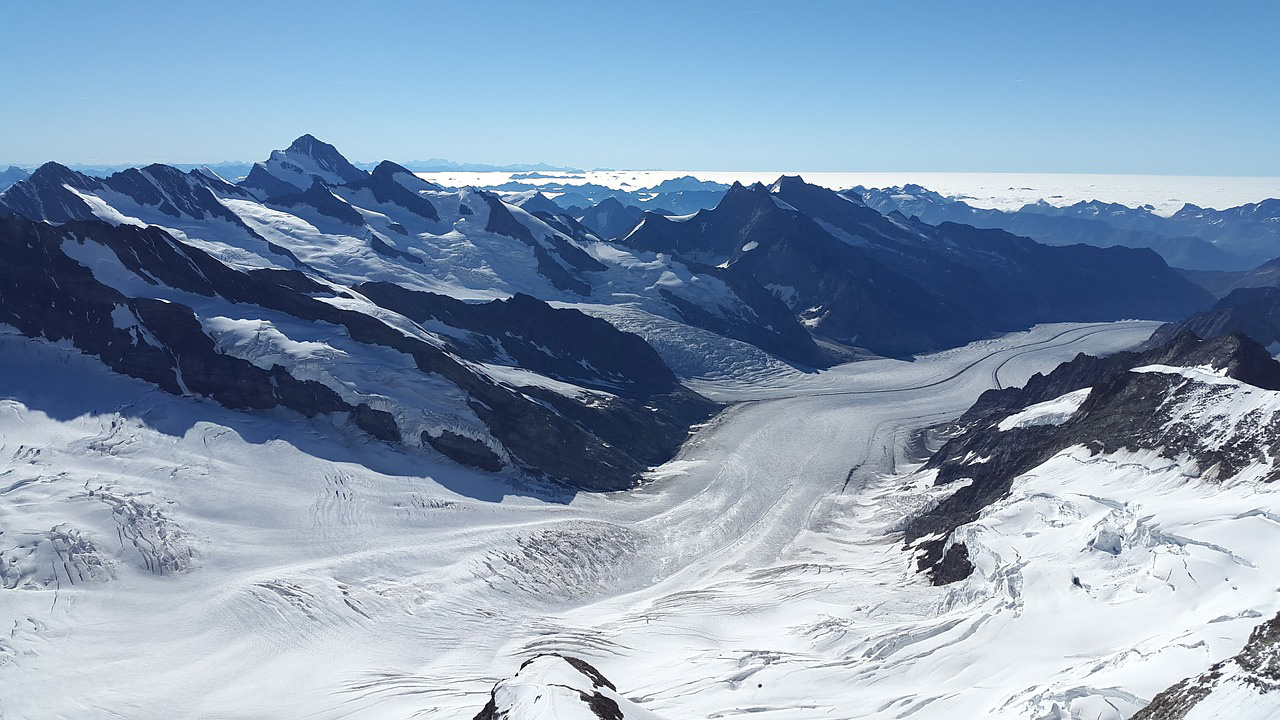
18 Jul Aletschglacier
The Aletschglacier, a unique and unforgettable sight and extremely unusual.
Location
The Aletschglacier is located in the Bernese Oberland, behind the Eiger, Mönch and Jungfrau mountains. It is visible from the Jungfraujoch and various surrounding huts. The glacier lies in the canton of Valais, but is still counted among the Bernese Alps.
Special features
The Aletschglacier is about 22.75 km long and has an area of about 81.7 km2. The glacier drains mainly over your Rhine and the Mass. It is said that about a third of the water in the Rhine and Massa also comes from the Bernese Alps. This is diverted via various streams, rivers and lakes, such as Lake Thun, into the major rivers.
Glacier fluctuations
In 1973 the area was still about 128 km2, even in 1863 the glacier was twice as big as today. Due to the earth’s warming, the glacier has been extremely degraded since 1870, especially below Konkordiaplatz. The thickness of the ice has already decreased up to 100 meters in several places, which causes the vegetation to spread more and more on the glacier. At the old places there are now so-called vegetationless lateral moraines, which are actually only formed by “stones”. In former times the Aletsch Glacier was connected with the Oberaletschglacier and the Mittelaletschglacier, this is no longer the case today. The large glacier melt is also reflected in the surrounding cities and countries. In the 19th century, for example, various eruptions of crevasses in the Rhone Valley caused major damage due to flooding.
However, the glacier is immune to climatic fluctuations due to its large area. Therefore, with a week of sunshine and high temperature, the glacier does not melt above average. But the higher temperatures in recent years are now also pulling on the glacier. This makes the Aletschglacier a much sought-after research object for researchers from various countries. The length fluctuations of the glacier allow a reconstruction of the climate change of the 3200 years. By the discovery of fossil tree trunks and roots it could already be proven that under the glacier was already fossil soil.
Tip
The Aletschglacier can best be visited from the Jungfraujoch. A climb through the glacier is also possible, but you must always reckon with crevasses. Unfortunately, many people have already lost their lives and many have not yet been found. Therefore, one should only go to the glacier with very good knowledge. Best with a local guide.
You want to know more about the Aletschglacier?
Write to us at info@chalet-anemone.ch
